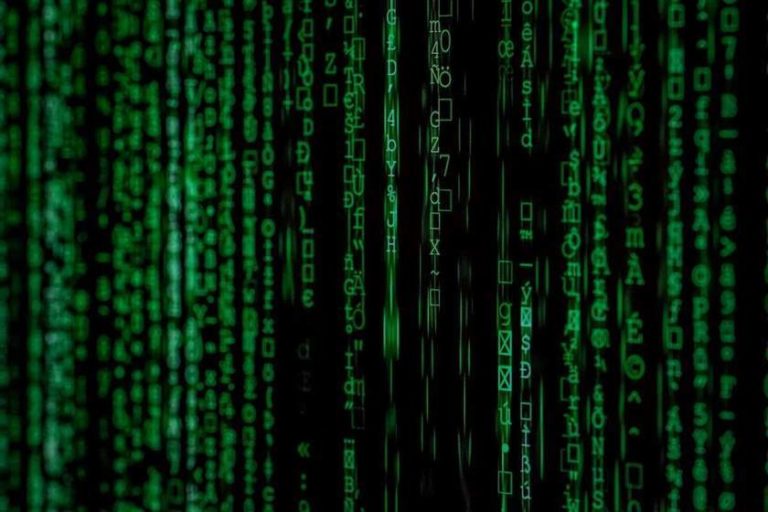This leads us to our first practical limitation of a probe when you connect it to a circuit you want to measure at DC, referred to as DC source loading. DC source loading deals with the finite amount of current that the probe and thus the oscilloscope needs to develop a signal voltage at the oscilloscope’s input. When connected to the CUT, the probe forms a parallel load to whatever it is measuring.

Importantly, we did not directly compare the assays per se, as that would have involved many different variables. Because of their standardized design, passive probes (including Z0 probes) from any manufacturer can ai implementation usually be used with any oscilloscope (although specialized features such as the automatic readout adjustment may not work). Passive probes with voltage dividers may not be compatible with a particular scope.
Generation of RNA transcript standards for RT–qPCR validation
In turn, the dot-probe task has some shortcomings as well, which will be discussed in this article. Yet, we will investigate the additive function of this task in emotion perception research. However, considering the absolute value of detection sensitivity, the sensitivity difference between the U-shaped probe and rectangular probe is not large, but the advantage of the semicircular probe will be more obvious in large lift-off detection. Figure 12 shows the experimental results of three types of probes at lift-off of 40 mm. From the separation degree of the normalized induced voltage curves of the defect and defect-free positions, it is found that the detection ability of the semicircular probe is better than that of the other two probes.
They have no active components, and often have some sort of compensation mechanism to match the oscilloscope’s input. It is not until later in many engineer’s careers that the more nuanced portions of the probe come into play while testing memory circuits, and we move from understanding it as Figure 1, to understanding it as Figure 2. All data are included in this article, the supplementary files and the source data. Some DC probe designs use the nonlinear properties of a magnetic material to measure DC.
Probe effect
The first, known as the geodetic —or as it is sometimes called, deSitter— effect, measures the size of the very small angle by which our Earth warps its local spacetime. One way to visualize this effect is to think of local spacetime as a trampoline and the Earth a bowling ball lying in the middle. The heavy ball warps or puts a dent in the trampoline, so that a marble (another celestial body) moving along the trampoline surface will be inexorably drawn down the warped slope towards the massive ball.

Stimuli of different conditions might differ not only in terms of their emotional valence, but also on other, lower levels. The color red captures and holds attention in both positive and negative nonhuman stimuli, but not in neutral stimuli. In one study, this resulted in motor responses to the target stimuli being affected by attention lingering over the position where a red cue was flashed (Kuniecki, Pilarczyk, & Wichary, 2015). In happy faces the (white) teeth are more present than in most negative facial expressions. It is therefore important to build in several control conditions, such as including bodily expressions (de Valk, Wijnen, & Kret, 2015) or scrambled or inverted faces (Fox, 2002) and use a large stimulus set. A study by Isaacowitz and colleagues (2006) did not find an attentional bias away from negative faces in an older age group, yet a study by Orgeta (2011) did.
How the Minimized Probe Load Capacitance Affects Oscilloscope Measurements
Though good scopes have very slight effects, in sensitive circuitry these can lead to unexpected failures, or conversely, unexpected fixes to failures. The studies discussed in this review all calculated and reported a difference score between reaction times on the congruent trials and reaction times on the incongruent trials. We chose to only include studies that calculated difference scores because this is the most general way in which the results of a dot-probe task are reported.

As a result, emotional stimuli are selected for further processing more often than neutral stimuli (e.g., Bradley et al., 1997; Yiend, 2010). The prioritized selection of emotional stimuli is even more enhanced when arousal increases (Lee, Sakaki, Cheng, Velasco, & Mather, 2014; Mather & Sutherland, 2011). The question remains whether nonhuman primates and humans process emotional stimuli similarly and whether the same attentional processes underlie their behavior.
How to Achieve Minimized Probe Load Capacitance
This input resistance scales with attenuation ratios as well, the DC model of a probe is shown in Figure 4. The recent spread of severe acute respiratory syndrome coronavirus 2 (SARS-CoV-2) exemplifies the critical need for accurate and rapid diagnostic assays to prompt clinical and public health interventions. Currently, several quantitative reverse transcription–PCR (RT–qPCR) assays are being used by clinical, research and public health laboratories. However, it is currently unclear whether results from different tests are comparable. Our goal was to make independent evaluations of primer–probe sets used in four common SARS-CoV-2 diagnostic assays.
- Two identical detection coils are wound on two magnetic feet and differentially connected.
- Comparing the performances of all these subgroups gives insight in the developmental course of emotion perception and enables cross-species comparisons.
- Since performance probes cover a wide frequency band, it is important to understand how the input impedance of a performance probe changes as the input signal increases in frequency.
- Yet, probe discrimination requires more cognitive load than probe detection because of the arbitrary relationship between stimulus and response.
- The high utilization efficiency of the magnetic field means that the ratio of the detection signal to the background signal is large, which is conducive to improving the detection sensitivity.
Asterisks at the top indicate primers (green) and probes (red) targeting regions with one or more mismatches. Genomic plots were designed using DNA Features Viewer 3.0.1 in Python v.3.7 (ref. 15). The classic current probe is a low valued resistor (a “sampling resistor” or “current shunt”) inserted in the current’s path. The current is determined by measuring the voltage drop across the resistor and using Ohm’s law.
Extended data
From our comparisons of RT–qPCR analytical efficiency and sensitivity, we show that all primer–probe sets can be used to detect SARS-CoV-2 at 500 viral RNA copies per reaction. The exception for this is the RdRp-SARSr (Charité) confirmatory primer–probe set which has low sensitivity, probably due to a mismatch to circulating SARS-CoV-2 in the reverse primer. We did not find evidence for background amplification with pre-COVID-19 samples or recent SARS-CoV-2 evolution decreasing sensitivity.

The signal to be measured is given to an oscilloscope using probes (cables that run from the oscilloscope to the test circuit). This resonant circuit will have a frequency response denoted by the ground lead inductance and probe tip capacitance, and is unavoidable but controllable. To understand what measurement frequencies that risk this effect, the transfer function can be worked out, resulting in the resonant point of the probe. As mentioned, the second physical characteristic that affects the measurement is the probe clip inductance; as a wire it has some amount of distributed inductance in the measurement loop.
B. Simulation results
The probe and scope input resistance will reduce the amplitude of the signal under test as shown in waveform on the right of Figure 2. The waveform shape of the loaded signal will closely resemble the source signal, but the amplitude will change. How much the source signal’s amplitude is reduced generally depends on the source resistance because most passive probes that ship with an oscilloscope have a very large 10 MΩ input resistance.
Input Capacitance Specification
But, with a faster oscilloscope, say 200 MHz, the ground lead induced ringing might very well be within the oscilloscope’s bandwidth and will be apparent on the display of the pulse. Next, a probe is attached to the circuit placing another resistance in parallel with the load. Here we can use SPICE to simulate three different probe tip resistances, 10k, 100k, 1M, 10M. B, The slope, intercept, R2, and efficiency of RT-qPCR using tenfold dilutions (100–106 viral RNA copies/μL) of RNA transcript standards with the corresponding primer-probe sets. The RNA transcript primers and sequences can be found in Supplementary Table 2 and Supplementary Table 3, respectively. Some probe designs have additional pins surrounding the BNC or use a more complex connector than a BNC.
When a probe is attached to this circuit, a portion of the signal’s current is removed by the probe. Since Probe 1 looks like a low impedance at low and high frequencies, the loading on the high speed serial signal is noticeable, but similar across the signal’s wide range of frequency components. This loading means that the signal seen by the receiver has been reduced from ±500mV to ±450mV, or 10% lower. This application note covers a range of topics and challenges, such as circuit loading, simulation of probe effects, the impact of connecting with long wires, and single-ended and differential measurements with a TriMode™ probe.

